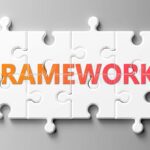In today’s fast-paced and competitive business landscape, having a high-performing team is no longer a luxury, but a necessity. The war for talent has never been more intense, and organizations that fail to attract, retain, and develop top talent risk being left behind. A winning team is the backbone of any successful organization, driving innovation, productivity, and ultimately, revenue growth.
However, building and maintaining a team of rockstars is easier said than done. It requires a deliberate and strategic approach to talent management, one that encompasses every stage of the employee lifecycle, from recruitment to development, retention, and succession planning. In this comprehensive guide, we’ll delve into the essential components of a winning team and provide a framework for building and sustaining a talented workforce that drives business success. Whether you’re a seasoned HR professional or a business leader looking to elevate your team’s performance, this post will provide you with the insights and strategies you need to create a dream team that propels your organization to new heights.
The importance of talent management in today’s competitive landscape
In today’s fast-paced and ever-evolving business landscape, the war for talent has never been more intense. With technological advancements, shifting workforce demographics, and the rise of the gig economy, organizations are facing unprecedented challenges in attracting, retaining, and developing top talent. The harsh reality is that without a deliberate and strategic approach to talent management, even the most promising companies can find themselves struggling to stay ahead of the competition.
In this new era of work, the most successful organizations are those that recognize the critical importance of talent management in driving business outcomes. They understand that their people are not just a means to an end, but rather the end itself – the key to unlocking innovation, productivity, and growth. By prioritizing talent management, these organizations are able to build a workforce that is agile, adaptable, and equipped to navigate the complexities of the modern business environment.
The consequences of neglecting talent management are stark. Without a clear strategy for attracting, developing, and retaining top performers, organizations risk being left behind by their competitors. They may struggle to fill critical skills gaps, experience high turnover rates, and see their productivity and performance suffer as a result. In contrast, those that invest in talent management are better positioned to drive business success, improve employee engagement, and build a sustainable competitive advantage. By recognizing the importance of talent management, organizations can set themselves up for long-term success and thrive in today’s competitive landscape.
Defining your organization’s vision and mission
Before you start building your dream team, it’s essential to define the foundation of your organization – its vision and mission. This is the North Star that guides every decision, from hiring to performance management, and ultimately, shapes the culture of your organization. Your vision and mission statements serve as a beacon, inspiring and motivating your team to work towards a common goal.
Think of your vision as the “what” – a clear and concise description of where you want your organization to be in the future. It’s the big picture, the ultimate aspiration that drives your team’s efforts. Your mission, on the other hand, is the “how” – a statement that outlines the purpose and primary objectives of your organization. It’s the roadmap that guides your team’s daily actions and decisions.
When crafted effectively, your vision and mission statements will resonate with your team, customers, and stakeholders, creating a sense of unity and purpose. They will influence the type of talent you attract, the values you instill, and the goals you set. By defining your vision and mission, you’ll be able to identify the skills, knowledge, and behaviors required to achieve success, and make informed decisions about who to hire, develop, and retain. In essence, your vision and mission statements are the foundation upon which your winning team is built.
Identifying key roles and competencies
As you embark on building a winning team, it’s essential to identify the key roles and competencies that will drive your organization’s success. This critical step sets the foundation for the entire talent management process, ensuring that you’re attracting, developing, and retaining the right people for the right jobs. Think of it as mapping the talent landscape of your organization, where you pinpoint the crucial positions that will propel your business forward.
To get started, take a step back and assess your organization’s current strengths, weaknesses, opportunities, and threats (SWOT analysis). This will help you determine the skills and competencies required to address your weaknesses, capitalize on opportunities, and mitigate threats. Next, examine your organization’s goals, objectives, and strategic priorities. What are the key performance indicators (KPIs) that will measure success? What skills and expertise are needed to achieve these goals?
By identifying key roles and competencies, you’ll be able to create a clear roadmap for talent acquisition, development, and succession planning. This will enable you to attract top talent, develop the skills and abilities of your existing team members, and ensure that your organization is equipped to tackle the challenges and opportunities that lie ahead.
Attracting top talent: Strategies for effective recruitment
Attracting top talent is a crucial step in building a winning team. In today’s competitive job market, it’s no longer enough to simply post a job description on your company’s website and wait for the right candidates to come to you. To attract the best and brightest, you need to be proactive, strategic, and intentional in your recruitment efforts.
This means developing a strong employer brand that showcases your company’s values, mission, and culture. It means leveraging social media and other online platforms to reach a wider pool of potential candidates. It means building relationships with top universities and industry organizations to tap into the most promising talent pipelines. And it means creating a seamless, candidate-centric experience that makes it easy for top talent to find and apply for open positions.
Effective recruitment is also about being intentional and targeted in your search for talent. This means identifying the key skills, competencies, and qualities that are essential for success in each role, and then using data-driven approaches to identify and attract candidates who possess those qualities. It means using a variety of assessment tools and techniques to evaluate candidate fit, and then moving quickly to make offers to the most promising candidates.
By taking a strategic and intentional approach to recruitment, you can attract top talent who are excited about your company’s mission and values, and who have the skills and abilities to drive success.
The art of selection: Choosing the right candidate
The art of selection is a crucial step in the talent management process, where the fate of your team’s success hangs in the balance. It’s a delicate dance between finding the perfect candidate and avoiding costly missteps. The wrong hire can be a drain on resources, damage team morale, and even impact your company’s reputation. On the other hand, the right candidate can bring fresh perspectives, skills, and energy to the table, elevating your team to new heights.
So, how do you separate the winners from the wannabes? It starts with a clear understanding of the role you’re trying to fill. What are the essential skills, qualities, and traits required for success? What are the nice-to-haves, and what are the deal-breakers? A well-crafted job description is your roadmap to finding the perfect candidate.
Next, you need to cast a wide net to attract top talent. This may involve leveraging social media, job boards, employee referrals, and even external recruiters. But it’s not just about quantity; it’s about quality. You need to develop a robust screening process to weed out unsuitable candidates and identify the cream of the crop.
Finally, the interview process is where the magic happens. This is your chance to assess the candidate’s skills, experience, and cultural fit in person. But beware of biases and assumptions. Use behavioral-based questions to get a glimpse into the candidate’s past performance and behavior. And don’t forget to involve multiple stakeholders in the process to ensure a well-rounded view.
By mastering the art of selection, you’ll be able to identify and hire top talent that will drive your team’s success and propel your organization forward.
Onboarding: Setting new hires up for success
The onboarding process is a critical component of the talent management framework, as it sets the tone for a new hire’s entire tenure with the organization. It’s a make-or-break moment that can either inspire and empower or confuse and disillusion. A well-structured onboarding program is essential to ensure that new employees quickly become productive, engaged, and committed members of the team.
Imagine walking into a new job, feeling a mix of excitement and nerves, only to be greeted with a vague “here’s your desk, good luck” attitude. Without a clear plan, new hires can flounder, struggling to understand the company culture, their role, and the expectations that come with it. On the other hand, a thoughtful onboarding process provides a warm welcome, a clear roadmap, and a sense of belonging. It’s an opportunity to share the organization’s vision, values, and goals, and to provide the necessary tools, training, and support to help new hires hit the ground running.
By investing in a comprehensive onboarding program, you can significantly reduce the time it takes for new employees to reach full productivity, improve job satisfaction, and decrease the likelihood of turnover. In this section, we’ll explore the essential elements of an effective onboarding process, including pre-boarding, role-specific training, and ongoing feedback and support, to help you set your new hires up for success and create a strong foundation for their future growth and development.
Developing your team: Training, mentoring, and coaching
Developing your team is a crucial aspect of building a winning organization. It’s where the rubber meets the road, and your investment in talent acquisition begins to pay off. When you provide ongoing training, mentoring, and coaching, you’re not only enhancing the skills and knowledge of your team members, but you’re also demonstrating a commitment to their growth and success. This, in turn, boosts their confidence, motivation, and job satisfaction, leading to improved performance, productivity, and retention.
Effective training programs should be tailored to the specific needs of each team member, addressing skill gaps, and aligned with the overall goals and objectives of the organization. Mentoring, on the other hand, provides a more personalized and informal approach to development, where experienced team members or leaders share their wisdom, expertise, and guidance to help others navigate challenges and achieve their goals. Coaching, a more structured and formal process, focuses on helping team members identify and overcome obstacles, develop new skills, and achieve specific outcomes.
By investing in the development of your team, you’re creating a culture of continuous learning and improvement, where everyone is empowered to reach their full potential. This not only benefits the individual but also has a ripple effect on the entire organization, driving innovation, collaboration, and ultimately, business success.
Performance management: Goal-setting, feedback, and evaluation
Effective performance management is the backbone of a high-performing team, as it enables individuals to understand what is expected of them, aligns their efforts with organizational goals, and provides a framework for growth and development. A well-structured performance management system should encompass three key elements: goal-setting, feedback, and evaluation.
Goal-setting is the foundation of performance management, where clear, measurable, and achievable objectives are established for each team member. These goals should be aligned with the organization’s overall strategy, ensuring everyone is working towards the same objectives.
Regular feedback is essential to provide team members with insights into their progress, identify areas for improvement, and recognize outstanding performance. This feedback loop should be a two-way street, where team members can also provide input on their experiences, challenges, and suggestions for improvement.
Finally, evaluation is a critical component of performance management, where an individual’s performance is assessed against their goals and objectives. This process should be fair, transparent, and based on measurable criteria, providing a clear understanding of strengths and weaknesses. By integrating these three elements, organizations can create a performance management system that fosters growth, motivates team members, and drives business success.
Retention and engagement: Strategies for keeping your best people
Retention and engagement are the unsung heroes of a successful talent management strategy. After investing time, effort, and resources into attracting and developing top talent, the last thing you want is to see them walk out the door. Yet, employee turnover is a harsh reality that many organizations face, with the average cost of replacing a single employee ranging from 16% to 213% of their annual salary. The consequences of turnover are far-reaching, affecting not only your bottom line but also team morale, productivity, and ultimately, your organization’s competitiveness.
To avoid this talent drain, it’s essential to focus on retention and engagement strategies that foster a positive work environment, encourage growth, and recognize employee contributions. This can be achieved by implementing initiatives such as regular feedback and coaching, opportunities for professional development, competitive compensation and benefits, and employee recognition programs. By prioritizing retention and engagement, you can reduce turnover rates, increase employee satisfaction, and create a workforce that is motivated, committed, and passionate about driving your organization’s success.
Succession planning: Building a talent pipeline for the future
As a leader, it’s essential to recognize that your organization’s success is not solely dependent on your own abilities, but rather on the collective strength of your team. A crucial aspect of building a winning team is ensuring that you have a robust talent pipeline in place, ready to fill critical roles when they become vacant. This is where succession planning comes into play. Succession planning is a proactive approach to identifying, developing, and retaining future leaders within your organization, ensuring that you have a steady supply of talented individuals ready to take on new challenges. By doing so, you’ll mitigate the risks associated with sudden departures, reduce the likelihood of costly recruitment mistakes, and maintain business continuity. Moreover, a well-planned succession strategy sends a powerful message to your team members, demonstrating that you’re invested in their growth and development, and that their hard work and dedication can lead to exciting opportunities for advancement. By building a talent pipeline, you’ll not only secure your organization’s future but also create a culture of growth, innovation, and excellence.
Talent management metrics: Measuring success and identifying areas for improvement
As you embark on the journey of building a winning team, it’s essential to have a clear understanding of how to measure the success of your talent management efforts. Without a robust set of metrics, you’ll be flying blind, unable to identify areas for improvement or gauge the impact of your strategies on business outcomes. That’s why establishing a set of talent management metrics is crucial to driving data-driven decisions and optimizing your talent management framework.
These metrics should provide a 360-degree view of your talent management processes, from recruitment and hiring to employee development, retention, and succession planning. By tracking metrics such as time-to-hire, source-to-hire ratios, diversity and inclusion metrics, employee engagement and turnover rates, and leadership pipeline readiness, you’ll be able to pinpoint areas of strength and weakness, and make adjustments to your strategies accordingly. Moreover, by benchmarking your metrics against industry averages and best practices, you’ll be able to identify opportunities for innovation and improvement, and stay ahead of the competition in the war for talent.
Creating a culture of continuous learning and development
Creating a culture of continuous learning and development is the cornerstone of a high-performing team. When employees feel that they are growing and improving in their roles, they become more engaged, motivated, and committed to the organization. In today’s fast-paced and rapidly changing business environment, it’s essential to foster a culture that encourages learning, experimentation, and innovation. This means providing opportunities for employees to develop new skills, attend workshops and conferences, and participate in mentorship programs. It also involves creating a safe and supportive environment where employees feel comfortable taking risks, sharing their ideas, and learning from their mistakes. By doing so, you’ll not only improve individual performance but also drive business growth and stay ahead of the competition. A culture of continuous learning and development also helps to attract and retain top talent, as employees are more likely to stay with an organization that invests in their growth and development. By prioritizing learning and development, you’ll build a team that is agile, adaptable, and equipped to tackle the challenges of an ever-changing business landscape.
Overcoming common talent management challenges
The road to building a winning team is rarely smooth sailing. Even with a well-structured talent management framework in place, organizations often encounter obstacles that can hinder their progress. One of the most common challenges is the struggle to balance short-term business needs with long-term talent development goals. This tension can lead to a focus on quick fixes, rather than investing in the growth and development of current employees.
Another hurdle is the lack of effective communication and transparency throughout the organization. When employees are left in the dark about their career paths, opportunities, and expectations, they can become disengaged and demotivated. This can lead to turnover, which can be a significant drain on resources and morale.
Additionally, biases and assumptions can also creep into the talent management process, influencing hiring decisions and stalling diversity and inclusion efforts. Furthermore, the war for talent can be intense, making it difficult to attract and retain top performers. And, let’s not forget the ever-present challenge of managing change and adapting to shifting business needs.
By acknowledging and addressing these common challenges, organizations can develop strategies to overcome them and create a more effective, efficient, and sustainable talent management system. This includes establishing clear goals and priorities, fostering open and transparent communication, implementing unbiased hiring practices, and staying agile and adaptable in the face of change. By doing so, organizations can build a winning team that drives business success and stays ahead of the competition.
Conclusion: Building a winning team requires a comprehensive approach
As we conclude our journey through the comprehensive talent management framework, it’s clear that building a winning team is not a one-size-fits-all solution. It requires a thoughtful, strategic, and multi-faceted approach that touches every aspect of the employee lifecycle. From attracting and hiring top talent, to developing and engaging them, to retaining and succession planning, each step is crucial in creating a high-performing team that drives business success.
By implementing the 13 strategies outlined in this framework, organizations can create a cohesive and effective talent management system that identifies, develops, and leverages the strengths of their people. This, in turn, will lead to improved productivity, increased employee satisfaction, and enhanced business outcomes.
Remember, building a winning team is not a destination, but a continuous journey. It requires ongoing effort, commitment, and a willingness to adapt and evolve in response to changing business needs and market trends. By adopting a comprehensive approach to talent management, organizations can stay ahead of the curve, drive innovation, and achieve their goals.
As you embark on the journey of building a winning team, remember that talent management is not a one-time task, but a continuous process that requires dedication, effort, and a well-structured approach. By incorporating the comprehensive framework outlined in this article, you’ll be well on your way to attracting, retaining, and developing top performers who will drive your organization’s success. With a clear understanding of how to identify, develop, and engage your talent, you’ll be empowered to create a high-performing team that will propel your business forward and leave the competition behind. The winning team of your dreams is just around the corner – start building it today!












About The Author
Janus Andersen
Advice on Strategy | Innovation | Transformation | Leadership Helping growth strategies and M&A transactions for 20 years